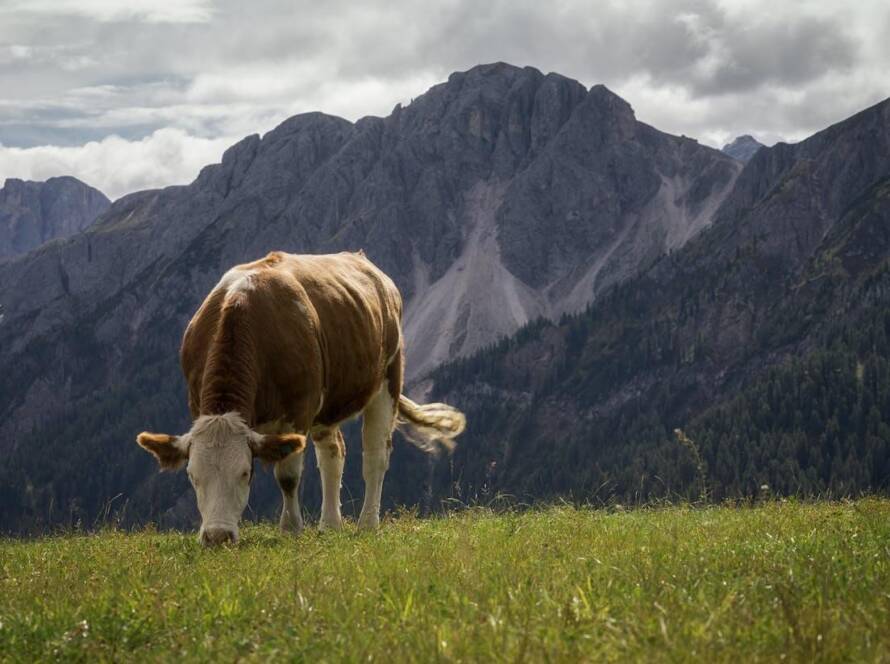When it comes to choosing beef, the terms “grass-fed” and “grain-fed” often come up, but what do they actually mean? More importantly, how do they impact the flavor, texture, nutrition, and environmental sustainability of the beef you eat? Whether you’re a foodie, a health-conscious consumer, or someone interested in sustainable agriculture, understanding the differences between grass-fed and grain-fed beef can help you make an informed choice at the grocery store or when buying directly from farms like Arkfeld Acres.
What Does “Grass-Fed” and “Grain-Fed” Mean?
Grass-Fed Beef:
Cattle raised on a grass-fed diet spend their entire lives grazing on pasture, consuming a natural diet of grass and forage. These animals may be supplemented with hay during the winter months but do not consume grains or processed feed.
Grain-Fed Beef:
In contrast, grain-fed cattle typically start their lives on pasture but are transitioned to a grain-based diet, usually corn or soy, during the final stages of their lives. This is commonly known as “grain finishing.” These cattle are often raised in feedlots where they’re fattened up quickly to reach market weight.
At first glance, the difference seems simple—grass versus grain—but it significantly affects the beef’s nutritional profile, taste, texture, and environmental impact.
Nutritional Differences
One of the most discussed distinctions between grass-fed and grain-fed beef is the nutritional content. Grass-fed beef is often praised for its higher levels of certain nutrients, including:
- Omega-3 Fatty Acids:
Grass-fed beef has a higher concentration of omega-3 fatty acids compared to grain-fed beef. Omega-3s are known for their heart-healthy benefits, including reducing inflammation and supporting brain function. - CLA (Conjugated Linoleic Acid):
Grass-fed beef also contains higher levels of CLA, a type of fat associated with improved immune function and potential cancer-fighting properties. - Antioxidants and Vitamins:
Grass-fed beef tends to have more antioxidants like vitamin E, as well as higher levels of vitamins A and K2, which support eye health, immune function, and bone strength. - Lower in Fat:
Grass-fed beef generally contains less total fat than grain-fed beef. While grain-fed beef has more marbling (intramuscular fat), which can enhance flavor, it also means a higher overall fat content, including less favorable omega-6 fatty acids.
On the other hand, grain-fed beef is often higher in saturated fat due to its grain-based diet, which may appeal to consumers who prefer the rich flavor of marbled beef. However, it lacks the balanced fat profile and the abundance of beneficial nutrients found in grass-fed varieties.
Taste and Texture: A Matter of Preference
Taste is subjective, but grass-fed and grain-fed beef do differ in flavor and texture. These differences stem largely from the diets the cattle are raised on.
- Grass-Fed Beef Taste:
Grass-fed beef tends to have a more robust, earthy flavor, which some describe as being more “beefy.” The leaner profile often results in a slightly chewier texture, and because it contains less fat, it can be less tender than grain-fed beef if not cooked properly. - Grain-Fed Beef Taste:
Grain-fed beef, on the other hand, is known for its rich, buttery flavor and tender texture due to its higher fat content. The grain diet leads to more marbling, which melts during cooking, giving the meat its characteristic juiciness and tenderness.
While some people prefer the lean and intense taste of grass-fed beef, others favor the milder, richer flavor of grain-fed. Ultimately, it comes down to personal preference, but each type requires different cooking methods to bring out the best in the meat. Grass-fed beef should be cooked more carefully at lower temperatures to avoid dryness, while grain-fed beef can withstand higher heat due to its fat content.
Environmental Impact: Grass-Fed Wins on Sustainability
Another key factor to consider is the environmental impact of how these cattle are raised. Grass-fed beef, while sometimes more expensive, is often viewed as the more sustainable option. Here’s why:
- Regenerative Agriculture:
Grass-fed cattle are raised on pasture, which promotes regenerative agriculture practices. These animals help maintain healthy soil by grazing, allowing grasslands to sequester carbon and improve biodiversity. The rotation of grazing can also prevent overgrazing and soil degradation. - Lower Carbon Footprint:
Raising cattle on grass tends to produce fewer greenhouse gases compared to feedlot operations, which rely heavily on fossil fuels for grain production, transportation, and feedlot management. Additionally, grass-fed cattle don’t require the synthetic fertilizers and pesticides used in industrial grain farming, further reducing their environmental impact.
In contrast, grain-fed beef production, particularly in large-scale feedlots, is associated with higher levels of environmental pollution. The production of grain feed requires significant amounts of water, energy, and land. Moreover, the concentration of cattle in feedlots produces large amounts of waste, which can lead to water and air pollution.
Animal Welfare Considerations
Animal welfare is another important distinction between grass-fed and grain-fed beef. In general, grass-fed cattle live in more natural, open environments where they can roam freely and graze on pasture. This aligns more closely with the cattle’s natural behavior, which contributes to improved well-being and reduces stress.
Grain-fed cattle, especially those raised in large feedlots, are often confined to small spaces where their movement is restricted. While they are fattened up quickly on grain, the conditions in some feedlots can lead to stress, overcrowding, and exposure to diseases. However, it’s important to note that not all grain-fed cattle are raised in poor conditions, and some farms prioritize ethical treatment regardless of the diet.
Cost and Availability
Grass-fed beef is often more expensive than grain-fed beef, primarily due to the longer time it takes to raise cattle on a pasture-based diet and the smaller-scale operations involved. Additionally, the availability of grass-fed beef can be more limited, particularly in areas without local farms or ranches offering grass-fed options.
Grain-fed beef is generally more affordable and widely available because it’s produced on a larger scale and cattle reach market weight more quickly. For consumers on a budget, grain-fed beef may seem like the more accessible option, but those willing to invest in the health benefits, environmental sustainability, and flavor of grass-fed beef might find the higher price worthwhile.
Conclusion
In the debate between grass-fed and grain-fed beef, there is no definitive winner. Each type offers distinct advantages and drawbacks, from nutrition and taste to environmental impact and cost. Grass-fed beef stands out for its superior nutrient profile and lower environmental impact, while grain-fed beef is valued for its rich flavor and widespread availability. Ultimately, your choice depends on your priorities—whether they lie in flavor, nutrition, sustainability, or cost.


